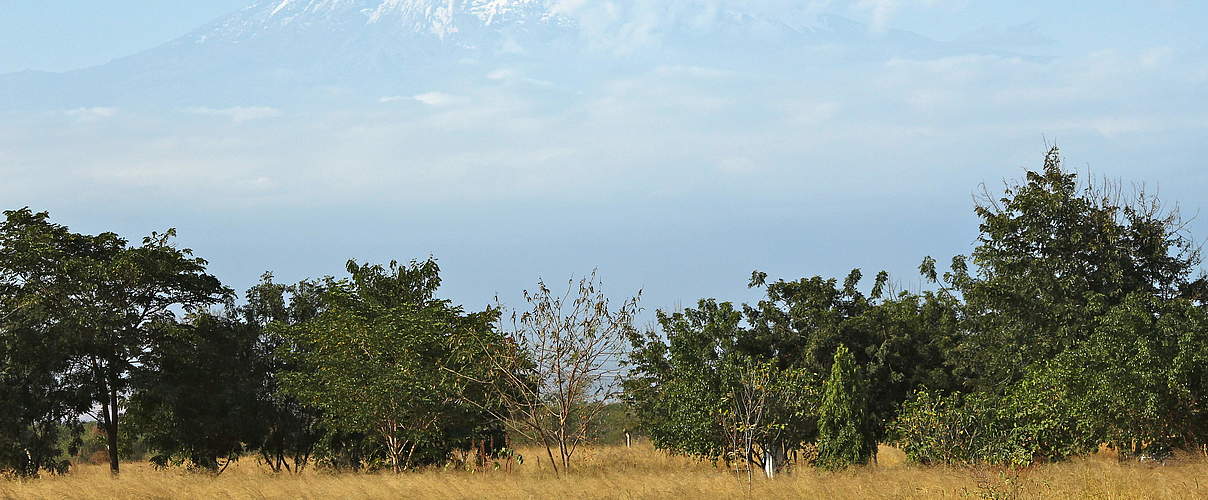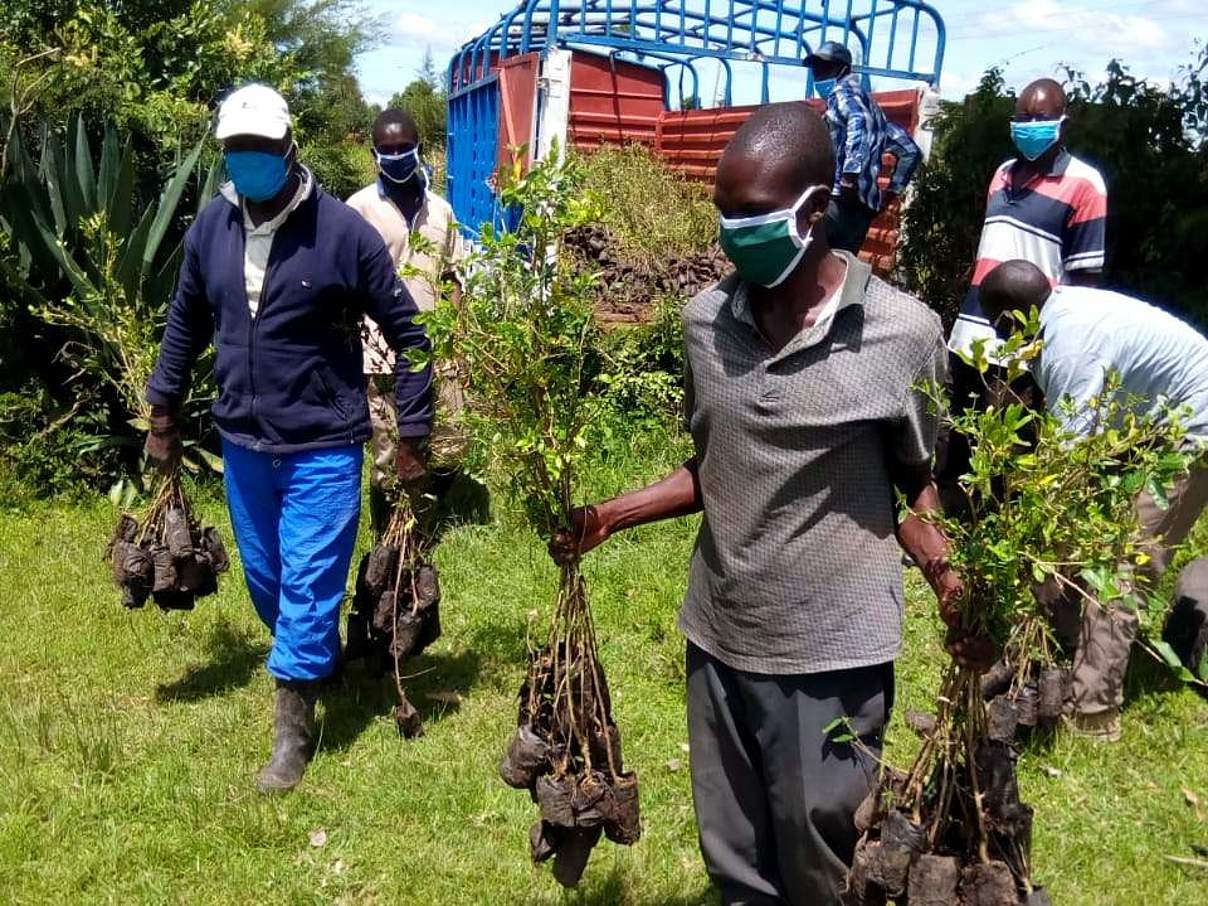In the Chepalungu region in Kenya the rainfalls of the so-called small rainy season have just begun. It is the perfect conditions for the saplings to thrive and grow into a real forest, a forest in which birds and other wildlife species are to become established naturally. Thanks to idealo 8,400 trees can be planted in the project region - and the idealo forest continues to grow.
To find out which trees should inhabit the future forest the local natural vegetation and soil conditions were thoroughly examined. For the moment, three native tree species have been chosen for planting: African wild olive (Olea Africana), East African juniper (Juniperus procera) and African greenheart (Warburgia ugandensis).
Over the last few months, more than 30,000 saplings have been grown from seeds of certified quality and origin in the nurseries. Five tree nurseries that are members of the Community Forest Association have been selected for this task. The plants have been distributed to working groups together with saplings from the existing nurseries of the Kenya Forest Service. The first planting cycle could be started with the beginning of the small rainy season at the beginning of October.
A natural forest is developing
The inner area of the area is to be planted with various indigenous tree species. In the peripheral areas, various fruit and fast-growing tree species will also be planted, which can be used sustainably by the surrounding communities.
During the second cycle, in the “great rainy season” from March to June 2020 more trees should be planted. The number of planted trees can easily be increased; further species are currently being selected.
The number of trees planted and their survival rate is regularly and precisely controlled by WWF and KFS. It is impossible to avoid the fact that some saplings will not make it. Despite excellent care, some trees do not root permanently and they die. They are all replaced in the following rainy season but are not counted as a new planting.
Acceptance in the community
100 hectares of land have been selected for the reforestation of Chepalungu Forest Reserve and have been prepared for planting. Local communities were able to use part of the area for two years for the cultivation of cassava and other plants. This has increased acceptance and participation among the local population and has lowered the costs.
Currently a participatory forest management plan is being developed together with the Community Forest Association along with the support of the US Forest Service. It will ensure that the local communities will continue to care for and conserve the growing forests but are also allowed to use them.
Further development of the project
When the trees are tall enough some of them may be cut, but it has to be ensured that the profits are used for replanting. This way, the system will sustain itself permanently. Ecologically highly valuable areas of the new and existing forests are completely excluded from economic use.
In a next step schools are going to be integrated for environmental education and large-scale reforestation and the participating communities will receive saplings for fruit trees and forest trees which they can plant on their own land outside of the forest reserve. In this way, a buffer zone is created around the forest – and also an additional incentive to participate in the programme.
Protected by the growing forest and by means of intensive management activities, such as stopping grazing, fire management and cultivation of the saplings, many further species can be settled naturally and will soon form a real forest.

